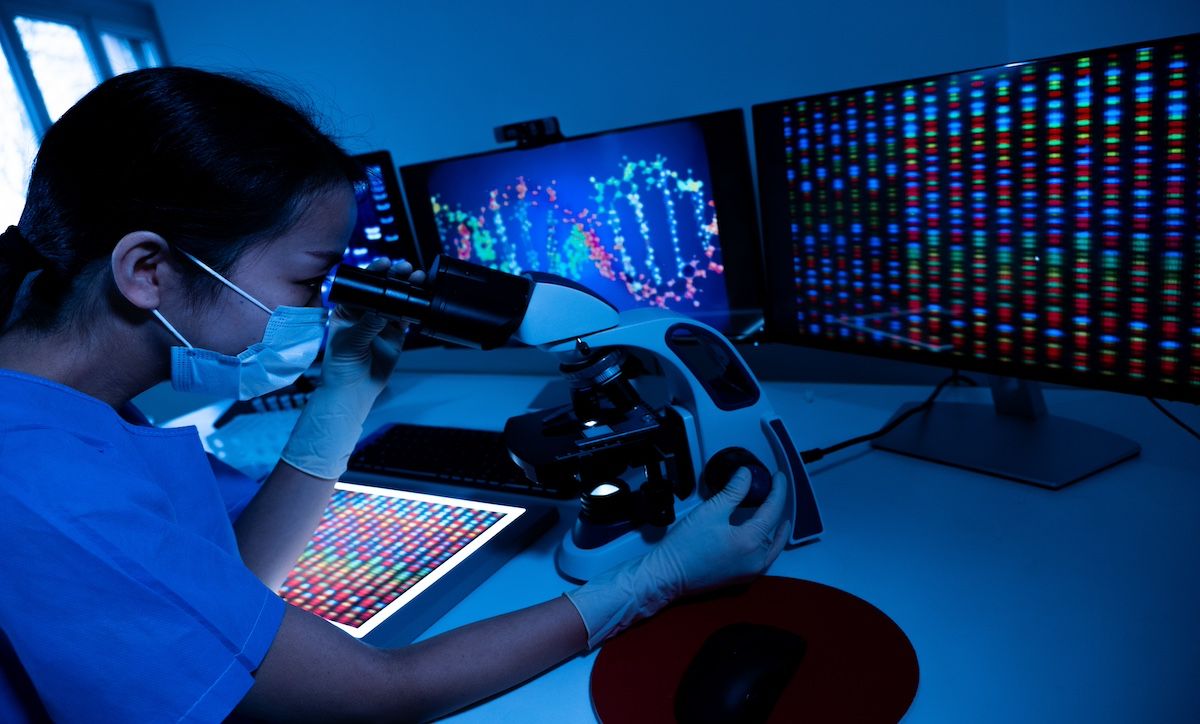- Center on Health Equity & Access
- Clinical
- Health Care Cost
- Health Care Delivery
- Insurance
- Policy
- Technology
- Value-Based Care
Genomics, Transcriptomics, and Epigenomics Utilized to Better Understand Chemoimmunotherapy Resistance in CLL
Advances in multi-omics have led to large scale studies that can provide a better prediction method for adequate therapy choices in patients with chronic lymphocytic leukemia (CLL).
Utilizing genomic, transcriptomic, and epigenomic data has uncovered molecular subtypes in chronic lymphocytic leukemia (CLL) that could allow for better prediction of therapy response and potential resistance in patients with CLL, according to a review published in Cancer Drug Resistance.
Large scale multi-omics studies have shown heterogeneity in CLL and identified novel genetic alterations that cause resistance to chemoimmunotherapy (CIT). Fludarabine, cyclophosphamide, and rituximab offer alternative treatment options, but the possibilities of potential toxicities and development of acute myeloid leukemia remain relevant when discussing treatment options with patients.
Based on this information, the investigators aimed to detail alterations that can lead to poor outcomes in patients with CLL who were treated with CIT. Observations from the review can guide clinicians and assist in the selection of appropriate therapies based on patient and their needs.
The investigators detailed common alterations in CLL associated with chemotherapy resistance. The most important mutation and/or deletion found in their analysis was TP53, which the investigators determined as “the most important consideration when deciding about treatment using chemotherapy.”
TP53 aberrances can result in the propagation of cells with many types of chromosomal and genetic abnormalities. Because of this, the investigators recommend using targeted therapies with specific genetic biomarkers that are independent of the p53 pathway in patients who have TP53 alterations.
Within chronic lymphocytic leukemia, genetic alterations have been found that cause resistance to chemoimmunotherapy
Image credit: RFBSIP - stock.adobe.com

Studies have shown that CIT leads to a clonal expansion of small TP53 subclones that can result in a chemo-refractory phenotype with an unfavorable prognosis when a patient relapses, the investigators found. In addition, novel agents did not lead to the propagation of adverse subclones.
Recent nongenomic RNA sequencing data has led to a consensus surrounding the importance of clustering gene expression subgroups that have unique clinical and biological significance. One such study defined 8 gene expression clusters that had transcriptomic profiles and differing prognoses, the investigators wrote. Epigenomic analysis revealed multiple mechanisms, including histone modifications, chromatin accessibility, DNA methylation, and gene regulation through noncoding RNAs. The investigators found DNA methylation has been the most extensively studied epigenetic change studied in CLL.
Clonal and subclonal evolution were also analyzed, and the investigators noted the often accelerated clonal evolution in cells treated with chemotherapy. In turn, DNA damage occurs, which leads to large numbers of genetic aberrations and increased genetic complexity.
Because clones and subclones with genetic lesions are resistant to CIT, clonal evolution occurs more frequently in patients with CLL who receive CIT. At the same time, clonal architecture remains stable in patients with untreated CLL or in CLL treated with targeted therapies.
The investigators noted that despite their paper describing the known mechanisms of resistance against conventional CIT, some of the mechanisms noted may also apply to novel agents such as genomic instability and high levels of proproliferative stimuli.
In the future, the investigators predict advances in multi-omics that can examine the difficult interplay between somatic mutations and transcriptomic, epigenomic, and proteomic changes to identify factors that underly the heterogeneous evolution of CLL. This will allow for a comprehensive framework to provide different treatments to patients beyond genomic alterations.
Despite challenges to translating multi-omics into personalized genetic-driven approaches, “genomic changes associated with resistance to novel agents are increasingly being uncovered, and we hope further multi-omics studies will help guide genomic-based interventions in CLL,” the investigators concluded.
Reference
Shin Yeu Ong and Lili Wang. Leveraging genomics, transcriptomics and epigenomics to understand chemoimmunotherapy resistance in chronic lymphocytic leukemia. Cancer Drug Resist. 2024;7:7. doi:10.20517/cdr.2023.98
